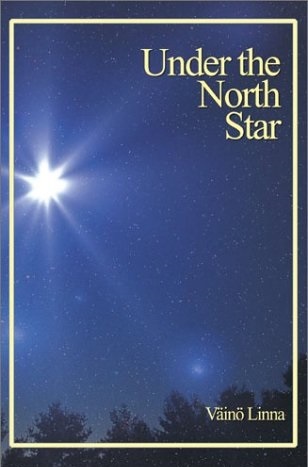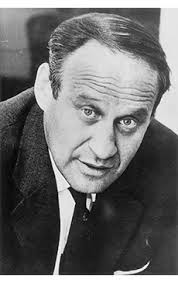One of the classic sagas of Finnish literature detailing life in a village in the period 1884-1907 as a microcosm of Finnish history of the period, which I read as homework for our planned short visit to Helsinki in September 2016.
It is earnest and documentary in style. We start with Jussi who works hard as the handy man at the parish manse and in his spare time drains a swamp, and with the verbal agreement of the vicar farms it.

All readers know, as Jussi suspects, that the verbal agreement will be insufficient when tested.
Much of the book is like this. It sets up situations that any reader can see unfolding.
The message is clear, the underclass always takes it on the chin, and the underclass is always Finnish, and even if the overclass is, in the village of Pentti’s Corners anyway, Finnish they hold the position because of Russian suzerainty of the Grand Duchy of Finland.
The language politics pervades all. The old vicar preaches in Russian and consoles the bereaved in Finnish. The local newspaper is in Russian. Finns are seldom permitted to speak Finnish.
Legal questions, like Jussi’s informal tenancy, are adjudicated by Russian law, not Finnish practice. Nor even by the rules of John Locke, i.e., ownership going to those who mix their labor with the land, which in this case would by Jussi.
A young vicar replaces the old and in time the pressure on his young family is resolved by encroaching on Jussi’s farm. The vicar’s wife is the source of this pressure, and she is a cardboard cutout for this role.
Indeed, none of the characters are rounded. Jussi is nearly a robot, who works all day and all night. Though he is credited with the vision to realize the swamp could be drained and farmed, that seems to be limit of his imagination, and that limit is enough for the plot. A little too pat, I thought.
Likewise, the other characters stereotypes from many other such stories, the talented and handsome workman who prefers to lay around scheming his next seduction, the vodka soaked doctor, the fiery tailor who speaks a garbled version of proto-Marxism from Georgi Plekhanov about the masses, the timid newspaper publisher who dares not print a word of Finnish for fear of losing the licence to publish.
The Japanese defeat the Russians in the Far East, and though not a word is said of it by any official source, and not a word published about it, still everyone in this remote village knows it. Yes, I know about rumour mills, but really, most of the unschooled people in the village Linna has conceived would have no idea of the Far East or Japan.
There is also political unrest in Helsinki, including an assassination. While this is closer to home, it is still an alien world to the villagers, whose major worry is retaliation from the Russians. Rational as that is, it also seems a long bow for these rough, uneducated villagers to see cause and effect in this way with the goings on in distant Helsinki where none of them, and no one they know, has ever set foot.
The tailor Halme agitates and the vicar counsels patience. Those locals who are aware of some of the wider world suppose that if the czar only knew how badly the Finns were treated, then he would change things. This is the old Russian folk maximum, perpetuated by every czar. The bad comes from corrupt ministers around the czar, that insulation that kept the Romanovs in business for the last hundred years. (Spell checker note: ‘czar’ is a difficult word to get through the spellchecker. It would prefer tsar so I stubbornly persisted with czar.
When Russia revoked its commitment to a Finnish Constitution, there was a reaction in Helsinki and nationalists adopted some proto-Marxist rhetoric to organised resistance. Some of the youths who resisted were exiled and made it to Queensland in northern Australia, as chronicled in the novel of Craig Cormack ’Kurikka’s Dreaming’ (2000). Russia itself was undergoing severe strains at this time, too.
Marx was right and Plekhanov was wrong, by the way, and the villagers do not arise to seize their the fruits of their labor. Although Jussi’s son Akseli becomes a convert to socialism and that makes him a marked man. While there is no general strike, but there are plenty of strikes here and there. The natives are indeed restless and Halme continues, making suits for the squires, while agitating for a mix of nationalism and socialism, one does not dare say national-socialism any more.
There are divisions among the Finns who are united by nationalism and divided by ideology. Numerous variations are traced in debates, speeches, rallies, and confusion.
The first time the people of the village see a Russian, he comes to nail up a notice filled with threats. Not a public relations master stroke. This followed shortly thereafter by evictions enforced by mounted police who are Finns but labeled Cossacks. It is a common motif that overwhelming force will shock and awe the restive into submission, and it never works, leading to ever more force, as it does in these pages.
Though I found the novel stiff and wooden, it is also true that the author knows the way of life of the people he depicts better, say, than the social realist writers in the United States covering the same period. I have in mind Theodore Dreiser, Frank Norris, and Sinclair Lewis. There is in Linna’s pages none of the condescension that Dreiser, Norris, and Lewis unwittingly reveal while representing the downtrodden. While loud in denouncing the oppressor such writers have no empathy with the oppressed. Their reaction is intellectual, learned from the pages of books. Linna’s voice is much more authentic than any of these three.
There is no redemption for the novel in the descriptions of that north star or nature and the place: these are mechanical. I found only one playful mention of Swedish, albeit I was turning the pages very fast, but ethnic Swedes remain to this day, an exclusive caste in Finnish society, as evinced by the Finnish literature written in Swedish.
 Väinö Linna
Väinö Linna
I glanced at the many laudatory reviews on Good Reads and found nothing in them to give me pause. This is volume one of a trilogy and I think I will leave volumes two and three to all those accoladers on Good Reads. Serves them right!
Skip to content
